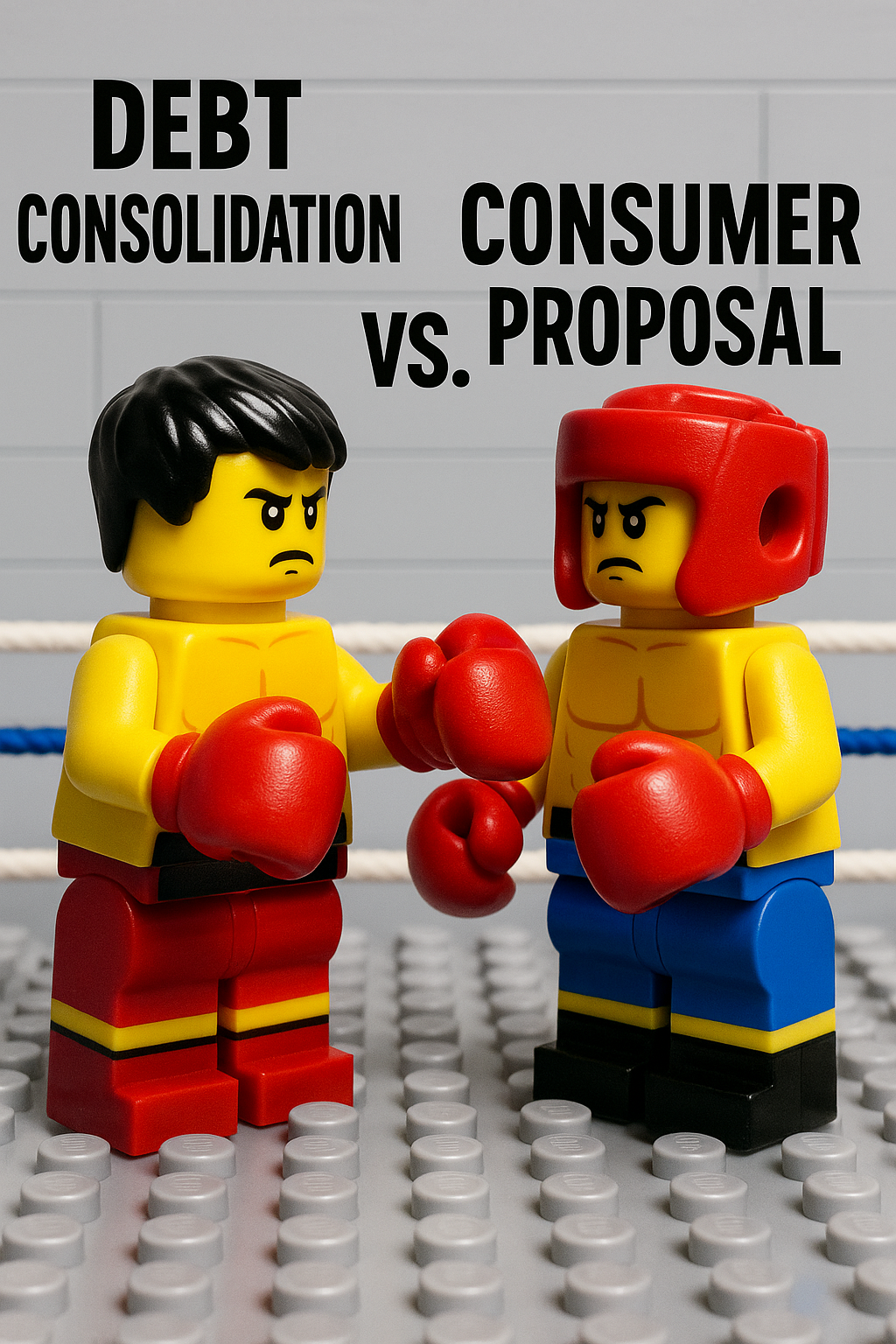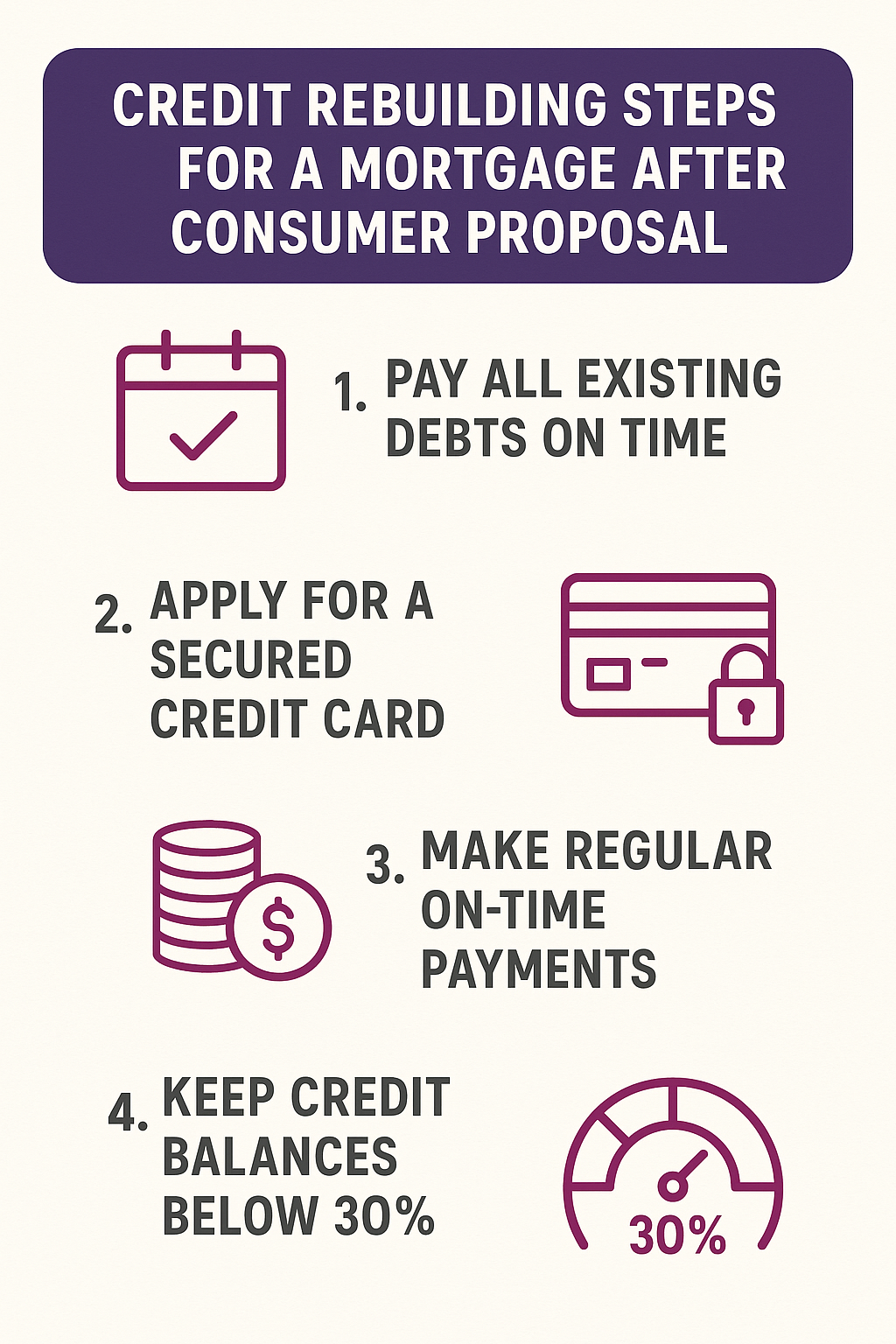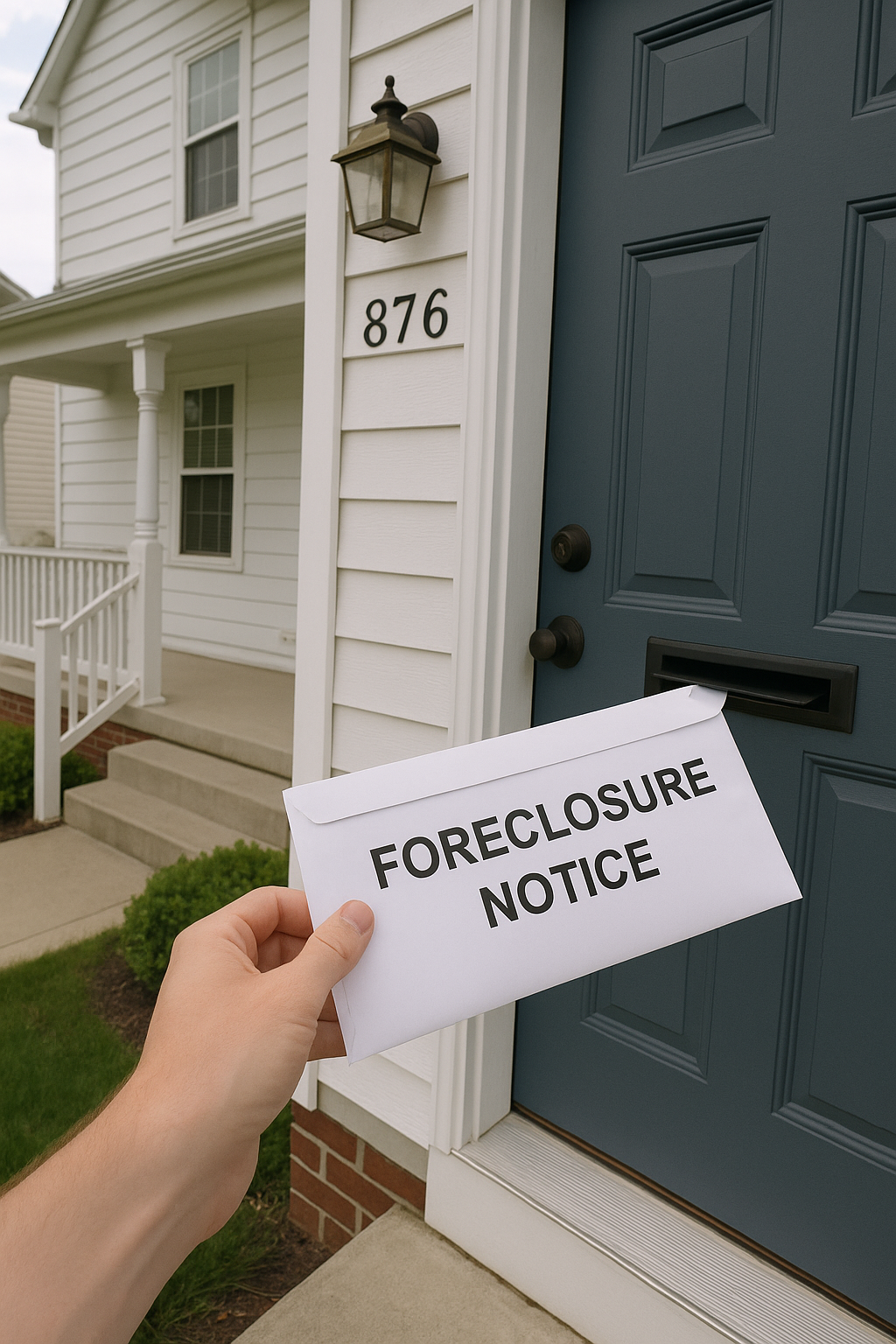As a top-performing mortgage broker in Ontario, I speak with homeowners every day who feel buried by credit cards, lines of credit, CRA/tax debt, or overdue bills. Many think a consumer proposal or even bankruptcy is the only way out. Often, it isn’t.
If you have home equity, refinancing to consolidate debt can slash interest costs, simplify your cash flow, protect your credit profile, and keep you in control—without the long-term scars of insolvency filings.
Below is a complete, plain-English guide—built to rank, convert, and help you decide quickly.
Table of Contents
ToggleWhat Is a Debt-Consolidation Refinance?
A refinance replaces your existing mortgage with a new one, usually larger, so you can pay off high-interest debts (credit cards, unsecured loans, tax arrears, collections) in one shot. The new mortgage carries a much lower rate than unsecured credit and gives you one predictable monthly payment.
Plain example:
-
Roll $40,000 of credit cards (~19.99%) into your mortgage at ~6.00%.
-
Typical credit-card payment over 5 years: ≈ $1,060/month.
-
Mortgage payment for that $40,000 over 25 years: ≈ $258/month.
Cash-flow relief: ~$800/month—and you can keep paying more to get debt-free faster, but now at a low mortgage rate instead of high credit rates.
Pro tip: Keep your payment at the higher level you’re used to. On a 6% mortgage rate, paying ≈$1,060/month would clear that $40,000 in ~3.5 years instead of 25.
Refinance vs. Consumer Proposal vs. Bankruptcy (At a Glance)
| Factor | Refinance (Debt Consolidation) | Consumer Proposal | Bankruptcy |
|---|---|---|---|
| Monthly payment | Usually lowest interest; flexible amortization | Reduced fixed payment to trustee | Lowest payment but most severe remedy |
| Credit impact | Generally protects/recovers credit if managed well | Serious hit; public record; often R7 for years | Severe hit; public record; R9; longest recovery |
| Home ownership | You stay in control; use equity strategically | Renewal/refi can be harder during & after | Financing very difficult for years |
| Interest cost | Low vs. unsecured debt | No interest on proposal payments, but still costly and credit-damaging | No interest, but major long-term cost to credit/lending access |
| Flexibility | High: restructure again, prepay, refinance | Medium: bound to proposal terms | Low: strict legal process |
| Stigma & disclosure | Private between you, lender, lawyer | Public record; must disclose | Public record; must disclose |
Bottom line: If you have sufficient equity and provable income, a refinance typically beats a consumer proposal or bankruptcy on credit health, borrowing flexibility, and long-term cost of funds.
Why a Refinance Often Wins (From a Broker’s Lens)
-
Massive interest-rate spread: Moving 18–29% debt into a ~5–7% mortgage creates immediate savings.
-
One payment, less stress: One due date. One plan. More focus on payoff.
-
Credit protection: Avoids the public record and lengthy credit penalties of insolvency filings. Better odds at competitive renewal rates.
-
Leverage your equity—safely: Use a portion of home equity to eliminate toxic debt, then rebuild buffers (emergency fund) as cash flow improves.
-
Negotiating power: A strong broker can compare A-lenders, B-lenders, credit unions, and MIC/private options to fit your credit, income, and time horizon.
-
Future flexibility: Prepayment privileges, lump-sum options, and refinance pivots when rates change or income improves.
When a Refinance Makes the Most Sense
-
You own in Ontario with appreciated value and at least 15–20% equity post-refi (more equity = more options).
-
Stable income (employed or strong stated income for alternative lenders).
-
High-interest balances >$20,000 across cards/LOCs/loans.
-
You want to avoid insolvency and keep future mortgage options open.
Not sure you’ll pass the “stress test” or qualify with your bank? A top broker can access B-lenders and private lenders who look at the big picture, not just a credit score.
Second Mortgage vs. Full Refinance
If your current mortgage has a hefty prepayment penalty or a great fixed rate you don’t want to lose, a second mortgage (or HELOC) can be a bridge for 12–24 months to wipe out the bad debt now, then roll everything into one A-lender mortgage at renewal. This is a strategy call, not one-size-fits-all.
Real-World Cost Snapshot
Scenario: $40,000 in credit cards at ~19.99% vs. refinancing that $40,000 at ~6.00%.
-
Credit cards (5-year payoff): ~$1,060/month; total paid ≈ $63,572 (≈ $23,572 interest).
-
Mortgage (25-year schedule): ~$258/month; total scheduled ≈ $77,316 (≈ $37,316 interest) — but only if you stretch it out the full 25 years.
-
Smart move: Keep paying ~$1,060/month toward that $40k inside your mortgage and be done in ~42 months, with interest at ~6% instead of ~20%.
Key takeaway: The win isn’t just a lower monthly payment—it’s cheaper interest and the power to accelerate without crushing cash flow.
How We Structure a High-Success Refinance (Our Playbook)
-
Debt map & credit triage: We list every balance, rate, and minimum. We spot “landmines” (collections, CRA arrears, payday loans).
-
Equity & valuation: We estimate market value; arrange an appraisal where needed.
-
Qualification route:
-
A-lender if ratios and score fit.
-
B-lender/Alt-A if recent lates, higher ratios, or self-employed income.
-
Private/MIC if urgency, proposal-in-progress, or unique situations—with a clear exit plan.
-
-
Cost/benefit math: We model prepayment penalties, new legal fees, lender fees, and appraisal—ensuring net savings now and over 12–36 months.
-
Payment strategy: We set a “target payment” (often your old minimums) to speed principal reduction inside the lower-rate mortgage.
-
Discipline safeguards: We close or reduce limits on high-interest accounts that were paid off, so the cycle doesn’t restart.
Common Questions (Fast Answers)
Will refinancing hurt my credit?
Typically, no, you avoid the severe, years-long credit damage of a proposal or bankruptcy. A hard inquiry and a new tradeline are minor compared to the long-term benefits of lower utilization and on-time payments.
Do I need to pass the stress test?
If you switch lenders, yes (per OSFI rules). If you blend/extend with your current lender, testing can be more flexible. If not a fit, B-lenders/private can provide bridging solutions.
Can I include CRA/tax debt?
Yes, many lenders allow payouts of tax arrears in a refinance. Clearing CRA debt can also prevent liens that complicate future lending.
What if I’m already in a consumer proposal?
Options still exist (often B/private while you complete the proposal). We will design an exit strategy for mainstream financing later.
What if my credit score is low?
Score matters, but equity, income stability, and payment history also count. We can often stage your path: start with a short-term alt/private solution, then graduate to A-lender.
What are the costs?
Expect appraisal, legal, possible lender/admin fees, and a prepayment penalty if breaking a fixed term (often 3 months’ interest or IRD). We include all costs in the math so you’re informed.
Mistakes to Avoid
-
Stretching to 25–30 years and only making the minimum, without a plan to aggressively prepay.
-
Leaving old credit lines open at the same limits after payout.
-
Refinancing without a budget—cash flow improves, but spending creeps back.
-
Ignoring your renewal—set calendar reminders 6–9 months ahead to evaluate rate, term, and strategy again.
Quick Eligibility Checklist (Ontario)
-
You own a home in Ontario with sufficient equity after consolidation.
-
Provable income (employed, pension, or stated self-employed with bank statements).
-
Documents ready: recent mortgage statement, property tax bill, NOA/T4 or income docs, ID, and payout statements for debts.
The Broker Advantage: Why Work With Us First—Not a Trustee
-
We preserve your options. Once you file a proposal/bankruptcy, it’s a public record and narrows financing paths for years.
-
We compare across the market. Banks say “approved/declined.” Brokers design solutions—A, B, or private—with a step-up plan.
-
We fight the penalty math. If a penalty makes a refi borderline, we’ll show second-mortgage, blend, or timing alternatives that still crush interest costs.
-
**We map your exit strategy on day one so you don’t get stuck with an expensive lender longer than needed.
Ready to Breathe Again?
If you’re an Ontario homeowner and high-interest balances are winning, don’t default to a consumer proposal or bankruptcy. Let’s run your numbers, protect your credit, and build a clear, affordable, and fast path out of debt using the equity you already own.
Free 15-minute consult: We’ll show you:
-
Your maximum savings today
-
Your best lender route (A, B, or private)
-
Your 12–36 month exit strategy back to the lowest-cost financing
This article is for general information only and not legal or insolvency advice. Talk to a licensed mortgage professional to evaluate refinance suitability and costs for your situation.
✅ Key Takeaway: Refinancing to consolidate debts should be reviewed first before making any other decision. Explore home equity loans, HELOCs, and second mortgages to borrow smartly.
- Mortgage Co-Signer vs Guarantor in Canada: Expert Playbook to a Smarter Approval in 2025 - September 24, 2025
- 7 Powerful Steps to Rent-to-Own Success: How to Qualify for a Mortgage and Exercise Your Option to Purchase - September 22, 2025
- Refinance Your Home Should be 1st Choice to Consolidate Debt: A Smarter Path Than Consumer Proposals or Bankruptcy - September 20, 2025






